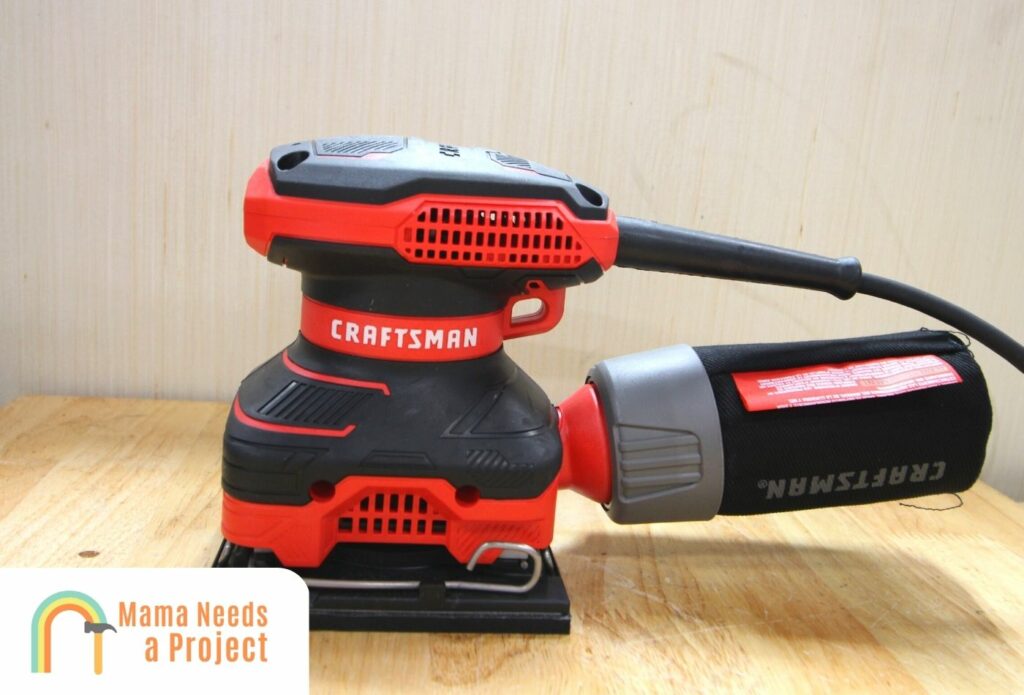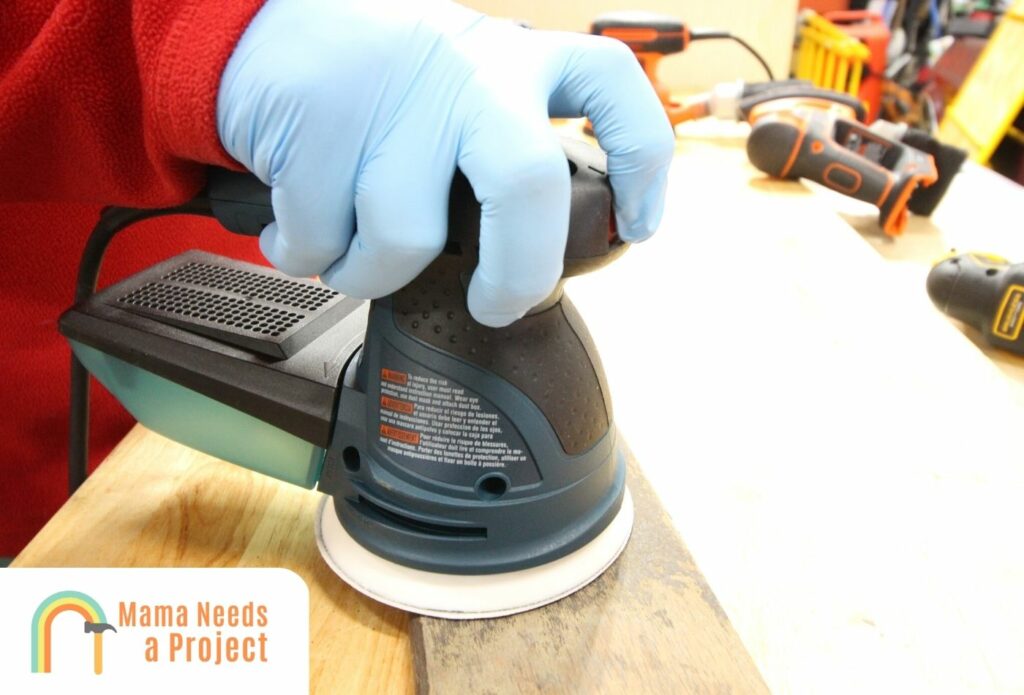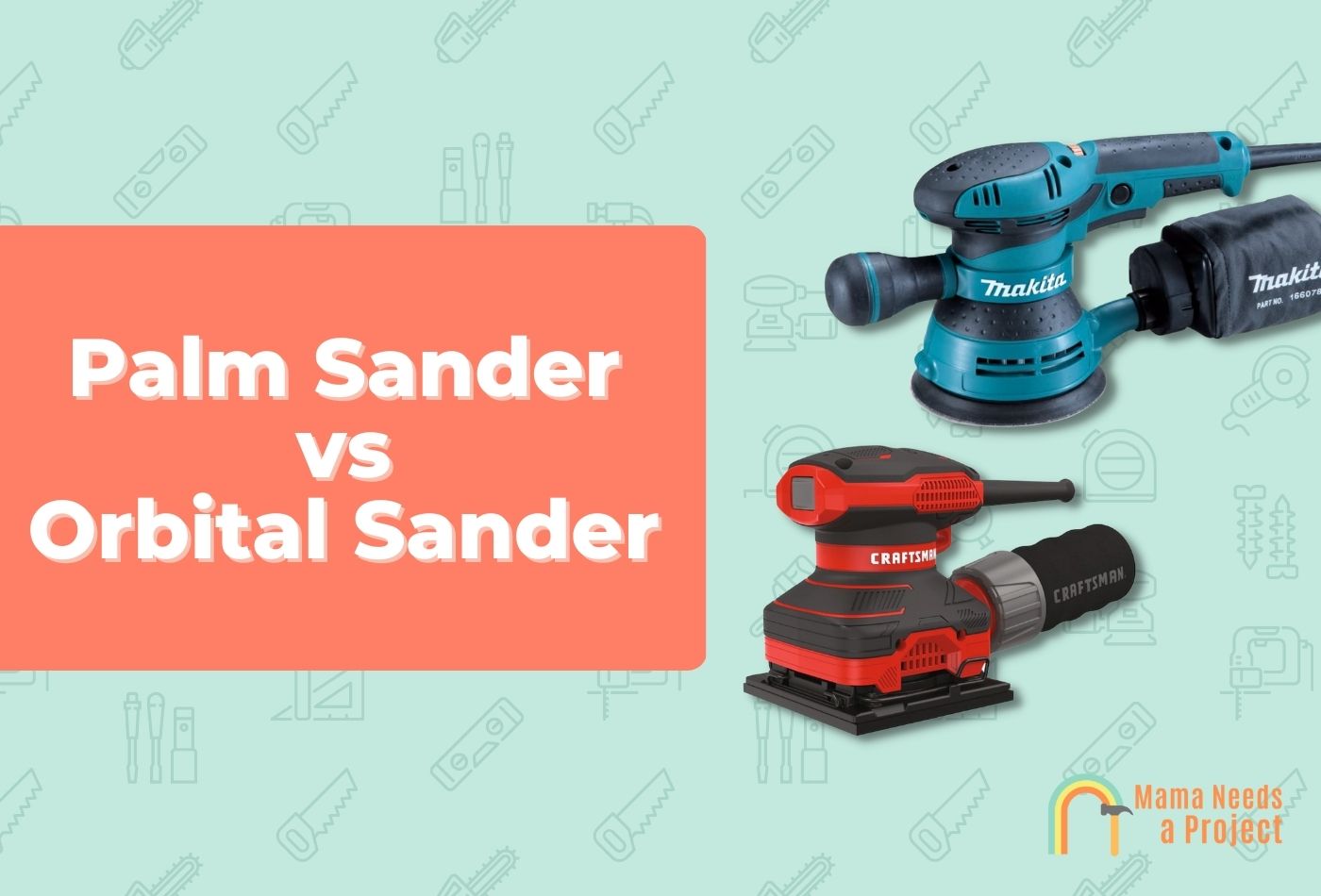Palm Sander vs Orbital Sander: Which Is Best? (Ultimate Guide)
Palm sanders and orbital sanders are two common types of power sanders you can get your hands on.
They offer plenty of similarities, but there are a few differences you’ll want to be aware of.
So how does a palm sander stack up against an orbital sander?
In this post, I’m going to compare palm sanders vs orbital sanders so you can decide which is best for your project. Let’s dig in!
Orbital sanders tend to be more powerful, faster, and more versatile than palm sanders but palm sanders are generally more affordable and better for smaller projects.
What is a Palm Sander

A palm sander is the smallest kind of sander that’s mainly used for small woodworking and DIY projects.
Unlike other handheld power sanders, a palm sander allows the user to maintain precise control when sanding around corners, joints, crevices, and gaps, as it’s lightweight, consistent, and not overly powerful.
It’s also called a “1/4-sheet sander” because the sandpaper it uses is a quarter of the size of standard sandpaper. Older models used to accommodate a 1/2-sheet, but these days such sanders are rare.
In addition to being compact and lightweight, palm sanders are also affordable. A typical palm sander will run you $25-$50, whereas a higher-end model can cost a couple hundred dollars.
And since palm sanders are affordable, efficient, and easy to use and store, they’re a favorite sander for many DIYers.
When powered on, a palm sander’s pad will vibrate in a small, circular motion which allows the user to achieve an even, flat surface. However, this can also cause swirl marks if you’re not careful.
When using a palm sander, it’s best to keep it moving; this way you don’t mar the wood’s surface.
Similarly, you should refrain from applying too much pressure, as doing so can lead to a more pronounced swirl pattern and possibly even damage your sander.
What is an Orbital Sander

Orbital sanders are another popular handheld power sander, often used more than palm sanders.
They come in different shapes and sizes, but circular sanders with a 5- or 6-inch diameter are the most common. Square orbital sanders are also widely used.
Some say that square pads are better than round sandpaper pads when it comes to sanding nooks and crannies, but I’ve used both pads and I haven’t found one to be more superior than the other.
Despite it’s relatively small size, an orbital sander can be used on woodworking projects large and small, as its efficient, powerful, easy to maneuver, and consistent.
Most orbital sanders are equipped with a circular sanding pad, though you can fit these with sandpaper sheets as well; these usually take 1/4 & 1/2 sheets.
Smaller orbital sanders cost $30-$50, whereas larger models can cost a couple hundred. Stationary orbital sanders can cost several hundred dollars.
Check out my guide on the differences between orbital sanders and belt sanders for more info finding the best sander for your project!
Standard Orbital Sander vs Random Orbital Sander
Before I go any further, it’s important to point out how standard orbital sanders and random orbital sanders are different.
When on, a standard orbital sander spins its sanding disc or pad in a clockwise motion anywhere from 4,000 to 12,000 times in a single minute.
A random orbital sander operates similarly, except it also moves the disc or pad back and forth as it spins, which reduces swirl marks.
Both sanding tools have adequate sanding power and both can achieve a smooth wood surface; it’s just that a random orbital sander will achieve a smooth surface with less swirl marks.
Orbital Sander vs Palm Sander

Despite being similar in numerous respects, it’s the ways in which these power sanders are different that lead woodworkers to choose one over the other.
So if you’re having trouble deciding which of these two sanders is best for your woodworking project, compare them (as I do below) in terms of power, speed, price, size, weight, and shape.
Orbital Sander vs Palm Sander: Power
Generally speaking, orbital sanders are more powerful than palm sanders. However, some of the palm sanders on the market today are more powerful than the majority of orbital sanders.
Orbital sanders being more powerful is one of the main reasons why they’re used for larger jobs that palm sanders can’t handle.
However, too much power can be a bad thing when using an orbital sander, especially if you’re sanding a small, thin wood surface.
Also, more powerful models create more pronounced swirl marks. So if you want to avoid these, it’s best to use a less powerful orbital sander.
But if having enough power is a chief concern of yours, consider purchasing a tabletop orbital sander over a handheld version; these are a lot more powerful, in large part because they’re plugged directly into outlets.
Sure, more power comes with more speed—another important factor to consider when comparing sanders—but it also justifies a higher price. Therefore, if you’re mainly doing small projects, and you don’t need substantial power often, you should be fine with a standard orbital sander.
Lastly, too much power can also make operating the sander more difficult, especially if you don’t have a lot of hand, arm, or wrist strength.
The type of sander you should choose will depend on your project. I’ve put together a list of the best sanders for several different projects below!
Orbital Sander vs Palm Sander: Speed
How many times per minute an orbital sander can spin its sanding disc or pad is another important factor to consider when comparing orbital and palm sanders.
Most orbital sanders produce thousands of revolutions per minute, and those with a variable speed setting usually top out at 10,000-12,000 RPM.
In contrast, most palm sanders produce just a couple thousand revolutions per minute, making them slower than the majority of orbital sanders.
How fast a sander spins in large part determines how smooth the final finish will be. So if your goal is to get a generally smooth surface in a short period of time, opt for some kind of orbital sander; you can always use a palm sander later to do some detail sanding.
Speed also largely determines how much mess is created by sanding. Specifically, the faster a sander spins, the more sawdust it’ll create.
Therefore, since an orbital sander is generally faster and more powerful than a palm sander, you should definitely wear safety gear, i.e. goggles, a respirator, and gloves, when operating either a standard orbital sander or a random orbital sander.
Lastly, the speed at which an orbital sander spins largely determines the nature of the swirl marks it creates. Specifically, a sander that’s slower creates more pronounced marks, whereas a sander that produces 10,000-12,000 RPM usually leaves marks that are much harder to notice.
Palm Sander vs Orbital Sander: Price
As far as price is concerned, palm sanders are generally more affordable than both regular orbital sanders and random orbital sanders.
A high-end palm sander may run you $75-$100, whereas a high-end orbital sander can cost $250-$350.
If you think the price of a handheld orbital sander is high, take a look at their tabletop counterparts, as these cost nearly twice as much.
The main reason why orbital sanders command higher prices is because they’re more versatile and equipped with more components.
Palm sanders, on the other hand, aren’t all that complex. And since there isn’t a lot of demand for them, they don’t command higher prices.
Palm Sander vs Orbital Sander: Warranty
The warranties these tools come with are pretty similar.
Usually, they last two to three years and cover issues related to poor workmanship or defective materials.
Note: Attempting to fix your sander on your own, whether it’s a palm or orbital sander, will probably void the warranty that came with it.
Palm Sander vs Orbital Sander: Size, Weight & Shape
Palm sanders and orbital sanders are similar in size, weight, and shape. And because they’re similar in these respects, people often mistake them for being the same tool.
However, some orbital sanders are larger and therefore heavier.
Palm Sanders vs Orbital Sanders: Dust Collection
In terms of dust collection, both types of power sanders work similarly. Both often feature a dust collection port where you can attach your shop vacuum to keep dust out of the way.
Most orbital sanders will also come with a dust collection bag that eliminates the need for a shop vacuum.
When to Use a Palm Sander
Since they’re compact, easy-to-use, lightweight, and powerful (relative to their size), palm sanders are great at sanding around joints, gaps, crevices, and corners.
Generally speaking, this sander does best with small woodworking tasks, as it doesn’t take off a lot of material and it’s easy to control.
Sure, it may take longer to sand with this. But if you care about precision, this is the tool for you, as it can achieve fabulous results on even the smallest wood surfaces.
When to Use an Orbital Sander
Because they can take off a lot of material in a short period of time—and because they’re nimble enough to deliver precise results—orbital sanders are often used to sand furniture and furnishings, including doors, cabinets, tables, window frames, posts, and desks.
They’re also used to sand trim.
And before painting a drywall, you should use an orbital sander on it; this way the paint adheres to the wall better.
Lastly, an orbital sander can sand in hard-to-reach places, especially those that utilize a square sanding pad.
Final Thoughts
So what’s the verdict? Well, considering orbital sanders are more powerful, faster, and more versatile than palm sanders, it’s fair to say orbital sanders are the more superior sander overall.
That said, there are plenty of times when using a palm sander is the right move.
In truth, the best way to achieve a smooth, mirror-like finish is to use an orbital sander before switching to a palm or finishing sander.
Neither tool is too expensive, and since they’re both lightweight and compact, you shouldn’t have a hard time finding room in your workshop for either of these sanders.

